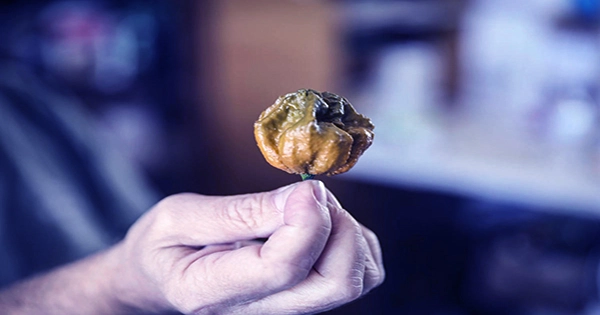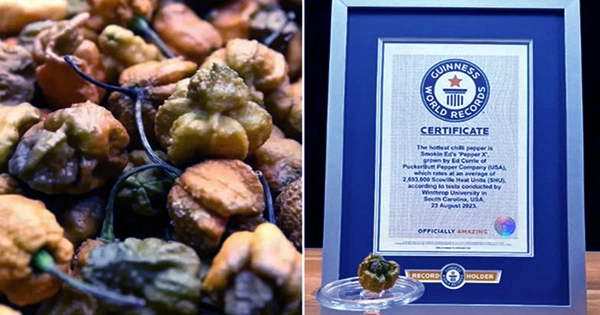“Pepper X” has been named the world’s hottest chili pepper, with a tongue-burning 2,693,000 Scoville Heat Units (SHU). It dethrones the notorious Carolina Reaper chili, which has a very moderate 1.64 million SHU rating. Please pass the milk.
Pepper X became the new Guinness World Record holder this week after being revealed on the YouTube show Hot Ones, which features celebrities being interviewed while consuming a gauntlet of hot sauce-soaked chicken wings.
Ed Currie, the famed chili pepper breeder and creator of PuckerButt Pepper Company, who also created the Carolina Reaper, grew it. He described how he created the new chili pepper after ten years of selective breeding, combining chilis with the most spiciness and then patiently waiting for the hybrids to stabilize with predictable features and reliable fruit.

Pepper X had been rumored to be the hottest chili on the planet for some years, but it was only recently that the title was officially bestowed upon it.
“This is the result of a lot of hard work by a lot of people.” It was said that it couldn’t be done. They called us liars, but we demonstrated to them that Pepper X is the hottest pepper in the world, according to Guinness. “All of the time and effort we put in at the farm to ensure that this was stabilized and became the hottest pepper in the world has now been validated,” Currie stated on the Hot Ones show.
“I can’t tell you how happy I feel right now. “All I really want to do is run laps around the building,” he added.
Currie, two other chili fans, and the show’s hosts ate a whole Pepper X each, and the results were, well, predictable.
“That violent and ever-growing, um, thing that is somehow making my face tighter, like the skin of my face feels tighter,” a clearly confused Sean Evans remarked, his face anguished.
Capsaicin is the active chemical in chili peppers that gives them their heat. Certain plants evolved the ability to create this molecule, which acts as a chemical irritant, to dissuade animals from eating them. Humans, on the other hand, have evolved a taste for the substance, enjoying a rush of endorphins when sufficient amounts are eaten.
A widespread myth is that the majority of capsaicin is located in chili pepper seeds, however, it is most prevalent in the placental tissue that contains the seeds. It’s also abundant along the thin layer that lines the inside of the chili pepper.
The Scoville scale is primarily used to assess capsaicin concentrations. To determine the spiciness of pepper, a solution of pepper extract is diluted in sugar water and tasted by a panel of tasters. The panel is given decreasing concentrations of the extract until a majority can no longer sense the heat in a dilution.
A pepper with 1,000 SHUs, for example, requires its extract to be diluted 1,000 times before the heat is no longer detectable. A bell pepper has no SHU, whereas a jalapeno has between 3,000 and 8,000 SHU. Pepper X is theoretically hotter than a bear spray, which employs capsaicin and other capsaicinoids to deter bears.
Is Pepper X ever going to be defeated? Any potential heir to the throne will need several years to breed, develop, and stabilize, but anything is possible.
















